Last year, over 85,000 people flocked to Providence for Rhode Island PrideFest, which boasts the only illuminated night parade in New England and one of just a few held in the U.S. This glowing event isn't just known locally; National Geographic ranked it as one of the top 10 Pride celebrations in the world in 2018.
This year, spectators of all ages, sexual orientations, gender identities, and backgrounds will gather again June 15 in the Rhode Island capital to witness the cars, floats, drag queens, and performers lighting up the city.
However, the illuminated night parade almost never came into existence. Rhode Island Pride is celebrating its 44th year, but the tradition of marching after sundown only began in 2001. And it was initially met with resistance.
The seed of the night parade began with cofounders Alexis Gorriaran -- a gay native of Providence who served as president of Rhode Island Pride from 1996 to 2005 -- and Rodney Davis, Rhode Island Pride's former cochair. Gorriaran, a certified event professional who is currently on Pride's board of directors, has a background in marketing -- he works as the senior director of marketing for (add)ventures, which produces events for governments, nonprofits, and companies alike. He wanted to use these skills to make a lasting impact on Pride.
"I like to shake up the tree a little bit," said Gorriaran, who is 45 now but began working with Rhode Island Pride at age 22. "It's like, all right, how can we look at this a little differently? How can we make it better?"
Inspiration struck during a conference organized by InterPride, a group made up of Pride organizations from all over the world. At the event, Gorriaran spoke with representatives from Las Vegas Pride and Dallas, who hold their Pride events at night and at dusk, respectfully. He loved the idea of the night parade and wanted to use their events as a model for his own city.
When Gorriaran first pitched the illuminated night parade, it was embraced by the board members and organizers of Rhode Island Pride. However, the idea was not warmly received by many members of the community.
"At first, it was really met with a lot of skepticism and anger," Gorriaran said. "And I was just really surprised at some of the reactions that we were getting from our community of people that were against it."
"They were like, 'Oh, my God, but you can't change it like this. And what about the children?'"he recounted with some lingering disbelief. "I'm not kidding. They were like, 'They're not going to be safe on the streets at night.'"
Even owners of the city's gay bars pushed back against the night parade. Pride traditionally brings a surge of customers to these establishments, and some feared the night parade would suppress turnout to the LGBTQ event, as well as the amount of hours visitors would be spending there.
Gorriaran persisted. In some ways, his fight follows in the spiritual footsteps of the early organizers of the parade, which almost did not take off. The state's first Pride was held in 1976, when sex between persons of the same gender was illegal. Providence's police chief, fearing the parade would incite violence, initially denied its permit. Organizers appealed the decision, and a federal judge, citing the First Amendment, granted them the right to assemble. Around 75 brave people gathered for the historic event.
Gorriaran did not have to go to federal court, but the process of adapting the night parade did require persuasion. All in all, it took several meetings with concerned citizens to convince the community to allow the night parade to move forward -- with one stipulation. If the event failed, Rhode Island PrideFest would resume its day parade the following year.
Fortunately, the illuminated night parade did not fail. In fact, it was a veritable success. Previously, a typical Pride parade would draw a thousand spectators. The night parade saw several thousand in its first year.
"It's crazy because every year it has continued to grow," attested Gorriaran. "Now we have a parade and a festival that draws close to 100,000 people, which is pretty awesome."
The interest in the night parade became a catalyst for many more changes to Pride, as well as to Providence. "It has energized and mobilized our community, and that energy is electric," said Gorriaran. "The parade fuels everything else that's going on in the city."
The city's rainbow banner trail, which marks the parade's downtown route through Dorrance Street, Washington Street, Empire Street, and Weybosset Street, now remains marked beyond Pride season as a reminder of Providence's commitment to the LGBTQ community. Many of the city's gay and LGBTQ-friendly bars, including the Dark Lady, Alley Cat, Providence Eagle, the Stable, Freeplay, and Ego can be found on or near this signage. The gayborhood is a popular draw for tourists throughout the year, but the establishments all have their own events tied to Pride season.
Rhode Island Pride itself has expanded into a month-long (and some year-long) series of events, including art exhibits, panels, concerts, block parties, dances, and even yoga. The cluster is greatest around Pride weekend. The parade begins on Saturday, June 15, at 8:30 p.m. this year. But there's also the tea dance beforehand, as well as PrideFest, which has over 200 vendors, food trucks, a kid's zone, and a wine and beer garden. In a marker of its goal to be more inclusive, Rhode Island Pride has also organized its first annual POC Dyke & Trans March, which will take place Friday, June 14.
Beyond Pride, the rise of Providence's LGBTQ celebration has also coincided with the explosion of its arts scene. PVDFest, now in its fifth year, will attract artists and spectators from around the world for a four-day festival, June 6-9, showcasing art, music, dance, and food in parks and public spaces.
There are attractions for art lovers open throughout the year, including the RISD Museum and a public walking tour of dozens of artworks. Large-scale murals covering the sides of buildings and other "public art ecosystems" are tended throughout Providence by The Avenue Concept. The city's culinary scene is also rapidly expanding into a world-class scene. Some highlights include the Italian restaurant Sarto and The Dorrance for fine dining, as well as Troop and Rogue Island for more casual fare.
Additionally, fans of nighttime lights would be remiss to miss WaterFire, a jaw-dropping art display from Barnaby Evans, in which dozens of braziers are set alight on Providence's three rivers. The lightings, which are held monthly and/or bimonthly from May to November, are symbolic of the city's artistic renaissance. The next lighting is scheduled for June 12 at sunset, just before PrideFest weekend.
And PrideFest has had an impact beyond being a fun party. The event, and its success, has given queer people a greater voice in Providence and Rhode Island, attested Gorriaran.
"It has become an economic engine for the city in certain regards because we're filling hotel rooms, were filling restaurants, were using venues and so once you start to affect the economic impact on all these different businesses, people are paying attention," said Gorriaran. "Not only do these events invigorate our community, our LGBT community, but it is allowing us to effect change on a bigger level around the state."
Of course, when it comes to planning LGBTQ events, there will always be obstacles. Just last weekend, the Catholic bishop of Providence -- echoing the same false arguments Gorriaran heard decades ago -- tweeted a warning against attending Pride, which he called "especially harmful for children."
In response, Rhode Island Pride organized a Sunday protest and responded in a tweet against Bishop Tobin's hypocrisy.
"Rhode Island is a welcoming and inclusive state," Rhode Island Pride stated in a tweet. "This bishop doesn't represent a majority of [Rhode Island] Catholics who overwhelmingly supported marriage equality 6 years ago. Love is love. You sir are filled with hate."
Clergy members and city officials, including Providence Mayor Jorge Elorza, attended the rally in support of the LGBTQ community and joined the crowd of protesters in chanting "love" at the event. The support demonstrates how far Rhode Island Pride, which once had to sue to survive, has come in becoming part of the fabric of the state.
The moral of the story of the night parade and its impact? Planning an LGBTQ event requires inclusivity, cooperation, and innovation, in addition to money and dedicated volunteers.
"You need to collaborate and communicate with everyone in your city, regardless of if they are an LBGTQ-owned organization or business. Really extend that invitation for everyone to get involved," Gorriaran concluded.
"The more people that you reach out to, the more change that we can impact and the more voices at the table that we can have, too."
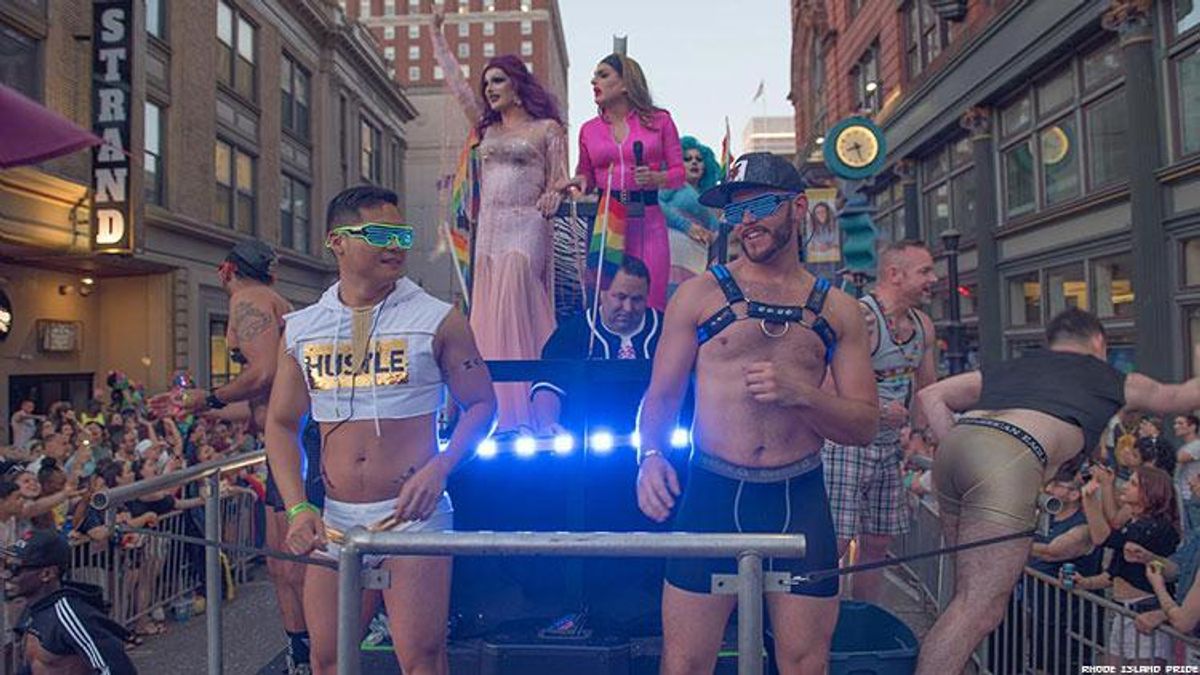

















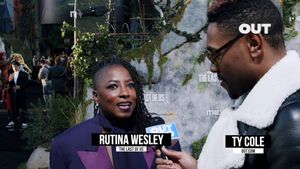








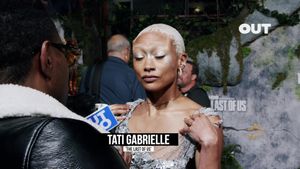

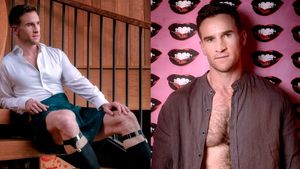







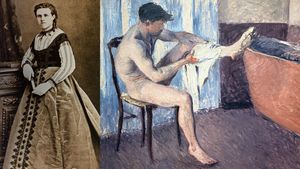




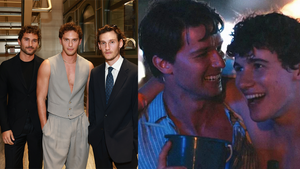

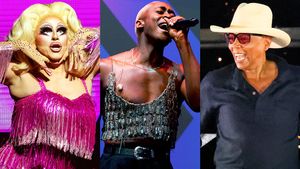

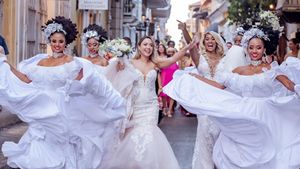



































Fans thirsting over Chris Colfer's sexy new muscles for Coachella